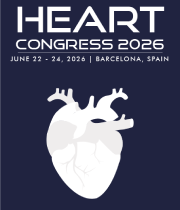Title : Managing total chronic coronary occlusion: Noninvasive External Counterpulsation (ECP) induces collaterogenesis, relieving ischemia, as demonstrated by quantitative PET myocardial perfusion imaging: ECP is a cost-effective alternative to high risk PCI
Abstract:
Background: External Counter Pulsation (ECP) is an FDA approved, noninvasive, treatment for patients with refractory angina, who are not candidates for low-risk interventional revascularization, such as those with chronic total coronary occlusion (CTO). ECP uses sequentially inflated blood pressure cuffs: from legs, thighs to hips, gated to the ECG, acting similarly to an intra-aortic balloon pump from which it was derived, augmenting diastolic pressure and coronary flow, while creating shear forces across coronary endothelium. This augmented coronary flow mimics the shear forces that develop due to the pressure gradient between the donor and recipient artery in CTO, stimulating gene activation and production of cytokines and growth factors leading to new cell growth, and increased bulk coronary flow capacity into the ischemic bed, through enlargement of coronary collateral vessels which were established during embryogenesis.The amount of collateral flow around a CTO has been measured invasively as the collateral flow index (CFI) which is quantified as the coronary wedge pressure in the recipient artery. When compared to “sham” ECP where cuffs were inflated to only diastolic pressure (e.g., 80mmHg), therapeutic ECP (cuffs inflated in diastole to 300mmHg), CFI improved significantly, indicating successful collateral development, potentially relieving ischemia.
Hypothesis: Coronary collateral flow capacity (CCFC) can be measured noninvasively using quantitative PET myocardial perfusion imaging, by comparing stress perfusion in the post-stenotic bed during vasodilator stress, which reduces supply side pressure revealing coronary steal through collaterals, compared with demand ischemia, using dobutamine, which maintains supply side pressure through the collateral bed.
Methods: Twelve sequential patients with CTO had the standard FDA approved protocol of 35 one-hour sessions of ECP, undergoing quantitative PET imaging with Rubidum-82 at rest, with vasodilator stress (DIP) before ECP, and dobutamine / atropine (DBT) PET after ECP.Absolute coronary blood flow was calculated per pixel and displayed as homolosine projections depicting each quadrant of the left ventricle: at rest, peak hyperemia, and as coronary flow reserve (CFR). A fourth set of parametric images was derived by plotting peak stress perfusion against the CFR, to produce coronary flow capacity images (CFC) which were divided into five, clinically relevant “band-widths” ranging from values in normal young volunteers, to those during vasodilator stress induced ischemia, using HeartSee software.
Results: Percent LV mass with ischemic CFC fell for all patients treated with ECP, revealing collateral flow capacity, when DIP stress was compared with DBT (28.1% vs 3.8% p = 0.001). One patient demonstrated minimal improvement in CFC despite ECP therapy: subsequent coronary arteriography revealed a new stenosis in the supply side vessel, which was stented.All 12 ECP treated patients improved minimal and lowest quadrant mean perfusion: DIP vs. DBT = 0.6 vs 1.2 ml/mn/g, p = 0.001, and 1.1 v 2 ml/mn/g, p < 0.001, demonstrating improved absolute perfusion into the ischemic zone with DBT compared with DIP stress, consistent with the presence of collateral vessel arteriogenesis into the ischemic CTO bed.
Conclusion: Successful coronary collaterogenesis can be identified and quantified noninvasively in patients with CTO using PET myocardial perfusion imaging.



